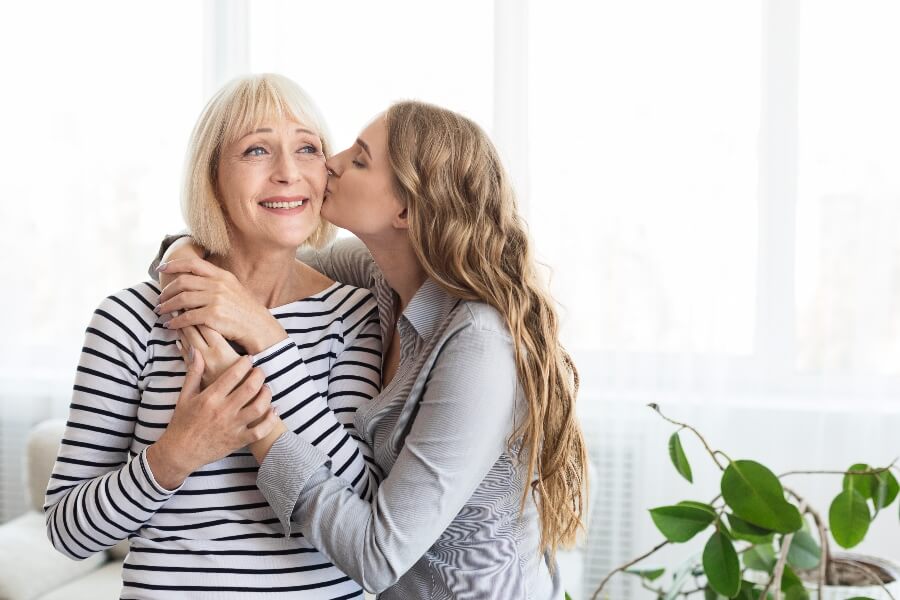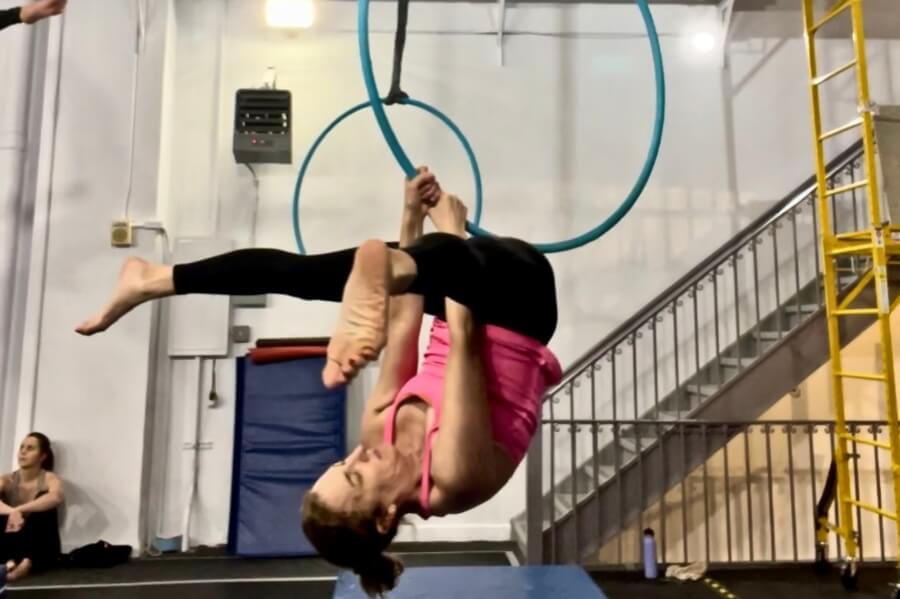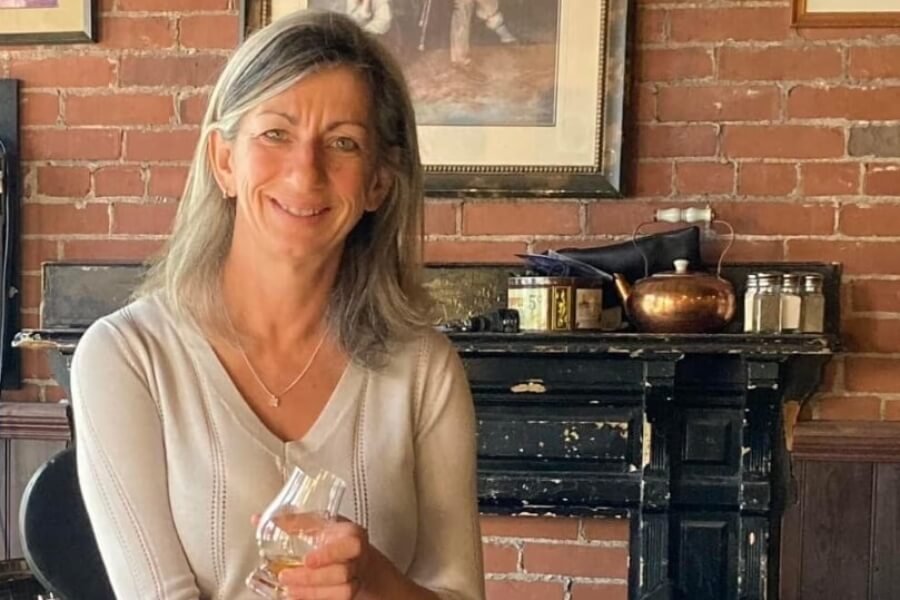I nudge aside the box of Multi-grain Cheerios as I reach for my oatmeal. I’m never going to choose it for my breakfast, but there it stands, a seemingly inconsequential pantry item that speaks volumes. Sophie, my 26-year-old daughter, ate a bowl of it nearly every day for the past 10 months. And now, she’s gone.
Like 52 percent of Americans under 30, Sophie moved in with her dad, the dog, and me to ride out coronavirus, arriving last March from LA where she’s the assistant to writers of a television show. We thought she’d stay a month. Boy, were we wrong.
At first, Sophie was distressed. Living in her childhood bedroom because of an unmanaged, fast-spreading disease caused her to ponder a suddenly uncertain future and shook her to her core. I had anxiety, too, but I quickly saw that a 60-year-old married woman’s stress was nothing compared to that of a young adult. I could live without socializing for a while. I didn’t need to go on dates. And I was perfectly content to be curled up on the couch watching re-runs of Friends. Being a 20-something in the age of COVID is like having the curtain come down at intermission—and not rise again. For months. The only thing she felt grateful for, she said, was that she was not alone in California.
Read More: Leaving Pajama Town: How to Ease Back Into “Normal” Life
Danger in the House
She might have rethought that 10 days later, when my husband got COVID. Now I was the one who was terrified. We isolated David in the primary bedroom, and I moved across the hall from Sophie, into the bedroom of my older daughter Kira, a law student in Boston. Sophie and I shared the bathroom, made meals together, did laundry, and took turns masking up and pulling on latex gloves to bring food and drink to our very own COVID patient.
Like 52 percent of Americans under 30, Sophie moved back in with her parents.
Two days after David got sick, Sophie opened the refrigerator and discovered our second crisis of the week.
“Mom,” she said, “I don’t think it’s working.”
I stuck my hand into the box and knew she was right. I’d just stocked up at Whole Foods and was now faced with major spoilage. Thanks to my husband’s illness, no repairman would enter our home. Sophie and I emptied the meat, chicken, frozen vegetables, produce, and more into camping coolers lined up across the family room. We sprang into action, cooking what we could—making stews and casseroles. I learned that the local appliance store would deliver a refrigerator to our garage, so I ordered one, and borrowed a dorm-sized fridge from a neighbor for the kitchen. Together, Sophie and I organized this new food storage system and then collapsed in exhaustion.
To say the household was tense is like saying that we are experiencing a political divide in our country. In an effort to lighten the mood one night, I suggested to Sophie that we join a “dance party” that was being offered by a web site I frequent. We stood expectantly in the kitchen, the Zoom screen open, as the strains of the 1970s hit “Car Wash” began. As we tried to follow the steps, we were incapacitated by laughter so severe that tears fell down our cheeks—or maybe they were tears of relief. I’m still not sure.
Adult Children Living at Home: The Gift of Time
After that, we settled into a routine of sorts. David recovered, thankfully, two weeks later and slowly regained his energy and stamina. Sophie and I baked challah on Friday afternoons, walked the dog together at midday, and played multiple rounds of Bananagrams. We discovered the reboot of the 1970s sitcom “One Day At A Time,” a show so delightful that it beat back our COVID worries and made us lifelong fans of the incredible Rita Moreno. We had a rule about watching it: As soon as Gloria Estefan began singing the theme song, we had to jump up and salsa around the room together. The lyrics were so apt: “This is life, the one you get so go and have a ball…this is it. Straight ahead and rest assured you can’t be sure at all.” Though the pandemic had shut down the world, I felt like an unexpected world was opening in my house.
Sophie’s COVID residency at our home brought the two of us together in a way I never could have planned.
I began reminiscing about how six weeks after Sophie was born, my husband needed to go out of town on business for a full week. Overwhelmed with the thought of taking care of a three-year-old and a newborn on my own, I whined to my mother, who insisted on coming to stay with me. She was in her 70s by then, newly in remission from lung cancer, and determined to help me in my hour of need.
For three days and nights, she kept an eye on Kira, our older daughter, threw in loads of laundry, cooked with me, and kept me company. She sat next to me in the dim glow of a nightlight as I breastfed, then she nudged me back to bed as baby Sophie nodded off. Though I worried about her health, her love and care soothed us all. Looking back now, I realize that her visit afforded me a once-in-a-lifetime opportunity to spend unending hours with my mom—something we daughters just don’t get (or necessarily even want) when we are young adults. Six months later, my mom died, leaving me to forever wish that she’d been able to spend a little more time with my daughters–and me.
Sophie’s COVID residency at our home in New York was a similar opportunity, a gift, one that brought the two of us together in a way I never could have planned. Our trial-by-fire experiences gave way to an everyday co-existence that to me became the beautiful hallmark of the pandemic. She was my daughter, but she was also my friend. And when Kira finally did come to visit, my heart was filled to have the four of us around the table together.
Leaving Again
But in late December, Sophie’s bosses called her to fly out to New Mexico where the television pilot they’d been working on was to begin shooting. At first, Sophie panicked about leaving the safe confines of our home (ironic since she initially didn’t want to be there). She made plans to take off on January 5. I dreaded the day. When she had left for college, I soothed myself by realizing leaving was what she was supposed to do and it would be far worse if she couldn’t go. I was good with it.
I wasn’t so good with it this time, however. Sure, she’s an adult now, with a life of her own. But just as nothing prepared me for the pandemic, nothing prepared me for her leaving—for the realization that not only is she really no longer that baby I rocked while my own mother sat beside me, but that she’s become a trusted friend, one whose company I am truly happy to keep.
On the morning of her departure, I bravely hugged Sophie goodbye and waved until she was out of sight. Then, I cried a little and walked around my empty nest, which now felt emptier than ever. I’m coping, though. When I really feel sad, I channel my inner Rita Moreno, do a little mental salsa, and muddle through one day at a time.
Read More: A Grown Child Comes to Stay During the Pandemic. Confusion Ensues





















0 Comments